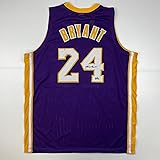WNBA Logo Collection
Basketball Sports Fan Products
ALL WNBA Teams Logo Collection
Primary WNBA Logo: The WNBA logo, introduced in 1996, featured a red, white, and blue shield with a player silhouette, echoing the NBA’s design. In 2013, it evolved into a bold orange silhouette of a player in motion, symbolizing energy and progress. The 2019 update refined this, showcasing a female athlete’s strength with a sleek, modern look.
Alternate WNBA Logos: Alternate logos vary across all WNBA teams, highlighting unique identities. For example, the Dallas Wings feature a winged horse with “WINGS” in volt green, while the Las Vegas Aces display “ACES” on a black diamond. These designs add vibrancy and team-specific flair to the logo collection.
Wordmark WNBA Logos: WNBA wordmark logos emphasize team names with bold typography. Examples include the Los Angeles Sparks’ italicized “SPARKS” and the Minnesota Lynx’s arched “LYNX” in green. The league’s 2015 wordmark update uses interconnected letters to symbolize unity and diversity.






























